
It’s important to know bed bug treatment costs if you have an infestation. Our guide covers different treatment methods and cost factors to eliminate these pests.
Not today, gnats


Fungus gnats pack a whole lot of obnoxiousness for their tiny size, so it’s understandable that you’re wondering how to get rid of gnats in plants ASAP. Luckily, there’s a simple reason why they gravitate towards your greenery, plus an array of effective, natural methods that can deal swift justice. Here’s what causes fungus gnats and how you can get them to stop bothering your plants.
Those tiny, annoying gnats in your house plants are attracted to excess soil moisture, so overwatering is typically why you have the pests. When plants stay too wet for too long, the soil can start to develop a fungus that attracts the gnats (hence the name). Once they’ve chosen their host plant, they lay eggs in the damp soil and hover around it like a cloud of furious, annoying, and ever-moving black dots.
Fungus gnats are most common in indoor plants, as their soil takes longer to dry out. However, if there’s a similar moisture issue outdoors, they might orbit around your in-ground garden plants as well. For the latter, it’s important to be vigilant following the winter thaw, as many pests are attracted to springtime moisture.
Once you’ve spotted fungus gnats, it’s important to quarantine the affected plants if possible. Since these buggers are a telltale symptom of overwatering, you’ll also want to check for root rot, especially if you’re wondering how to save dead or dying plants. For container plants, this is a relatively simple process:
Remove the plants from the containers and place them on a paper towel to absorb excess moisture.
Inspect the roots, clipping off any brown or mushy ones you see.
Empty out and discard the soil from the pot.
Wash the pot in hot, soapy water, making sure you fully rinse away all the suds.
Fill the pot with fresh potting soil and carefully repot the plant.
Unfortunately, if all you see are brown, mushy roots, this is grim news for the plant. Plants don’t bounce back once root rot has fully taken over. This is why it’s crucial to adjust your watering to the plant's needs, especially when a gang of fungus gnats tips you off to a moisture problem.
If fungus gnats are orbiting obnoxiously around your plants, there’s no need to resort to chemical pesticides. Use these natural methods to get rid of the gnats once and for all.
A light layer of diatomaceous earth on top of plant soil can help dry out the soil, while the sharp edges of minerals and fossilized organic matter will kill fungus gnats on contact. Always use food-grade diatomaceous earth to ensure it’s safe for your plants.
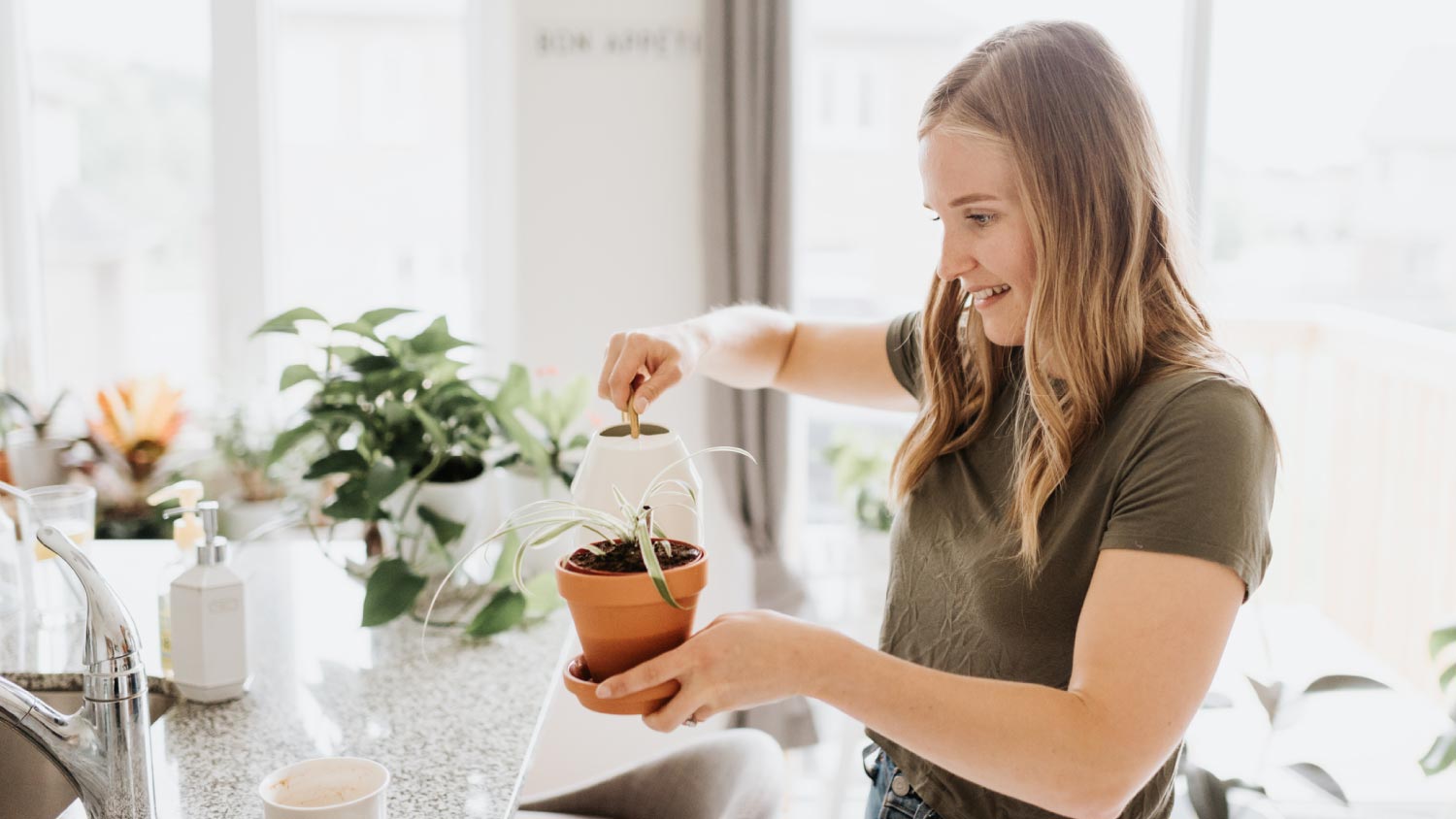
A diluted solution of one part hydrogen peroxide to four parts water is plant-safe and highly effective at killing gnat larvae. Pour the solution onto dry soil, just as you would with regular water. This will kill off any gnat eggs and larvae, plus it will help aerate the soil as well.

A few sheets of sticky gnat traps placed near plant soil will catch and kill adult gnats, thus preventing further breeding. Fungus gnats have a particular fondness for the color yellow, so be sure to pick the yellow traps. Pre-made plant stakes are available, or you can cut up larger sheets of yellow fly paper and create stakes out of toothpicks, popsicle sticks, or anything else pointy.
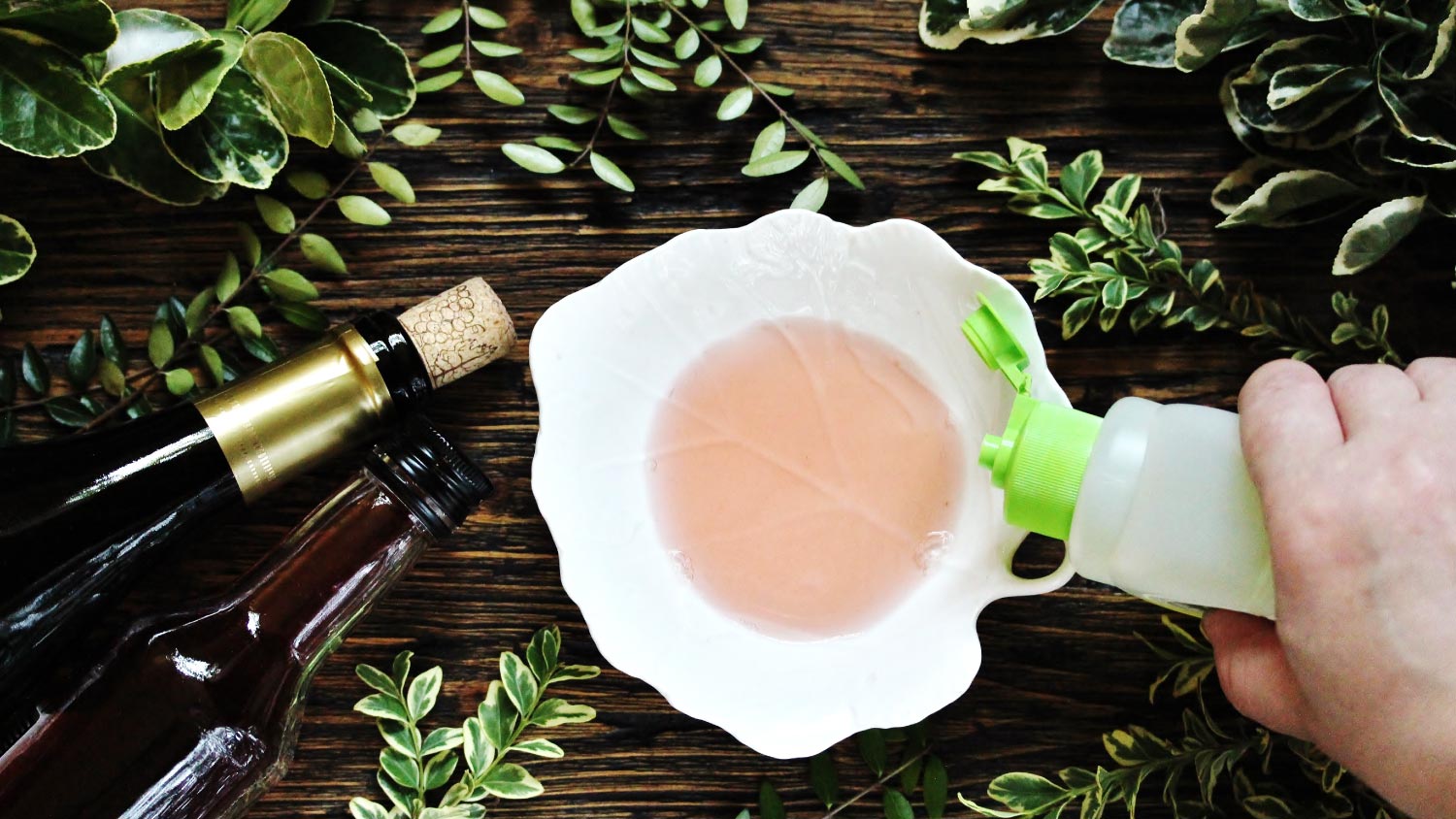
The sweetness of apple cider vinegar attracts gnats, plus the tantalizing amber tint adds an extra come-hither. Place a small, shallow dish of vinegar next to the plant. Add a few drops of dish soap to the mix—this will decrease the surface tension of the water, causing the gnats to sink and drown more easily.
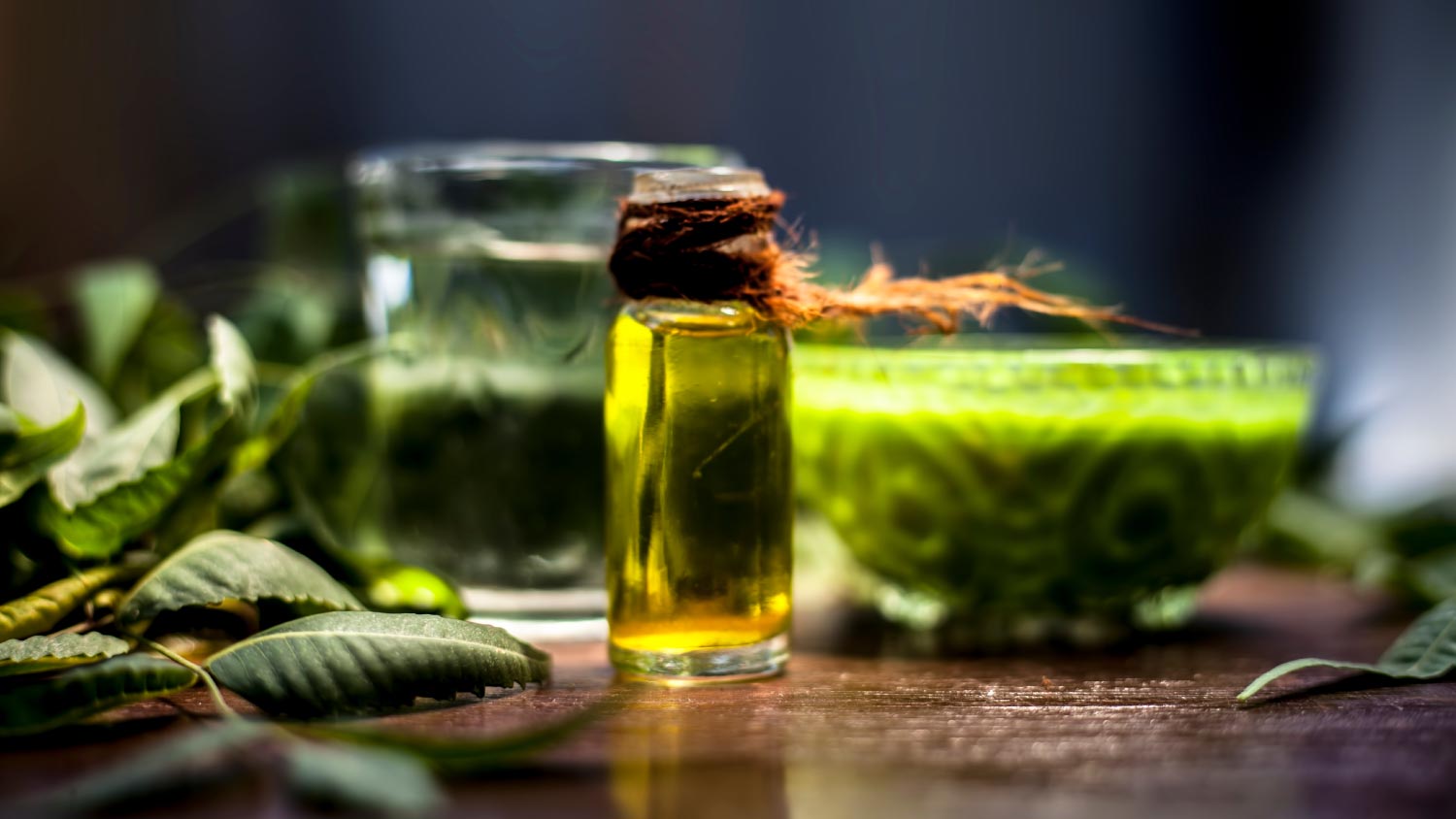
If you’re wondering how to kill fungus gnats, neem oil is a natural insecticide that can get the job done. When the soil is dry, liberally spray down the entire plant to polish off any insects, eggs, and larvae. You can pick up ready-made neem oil sprays or neem oil concentrates that you mix yourself.
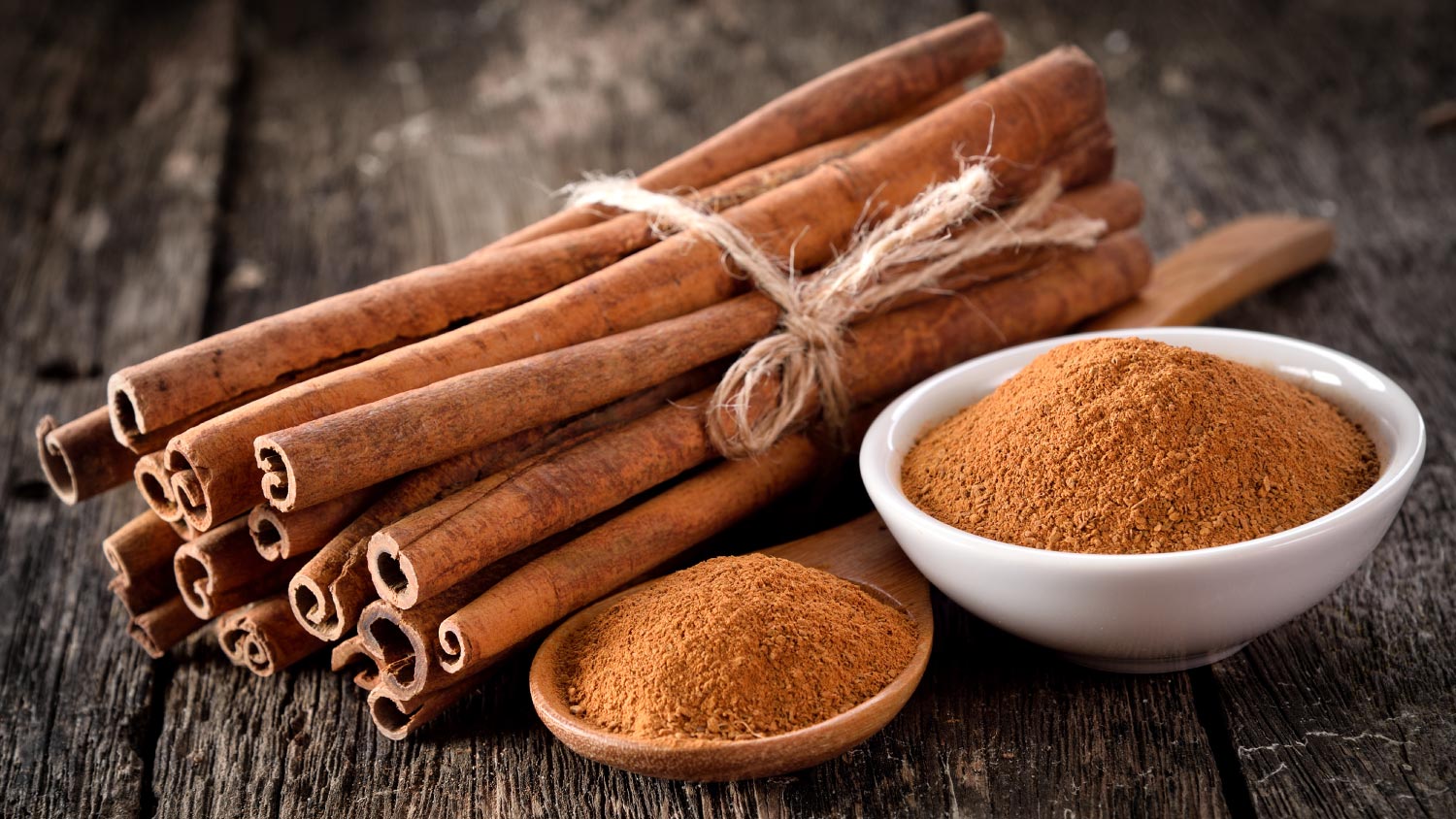
Cinnamon is a natural fungicide that can help eliminate what’s attracting the gnats. Sprinkle a generous layer onto dry soil before watering. Be sure to use 100% Ceylon cinnamon for maximum effectiveness.
Killer mites may sound fierce, but they’re actually beneficial garden insects that will prey on fungus gnats, thrips, and other soil-dwelling pests. Since traps and insecticides can harm other insects, they’re a great alternative for killing fungus gnats in your outdoor plants. You can order these mites online and introduce them directly to your garden.
Now that you’ve gotten rid of these pests, here’s how to keep them away.
Allow soil to dry out completely between waterings.
For potted plants, be sure to use pots with drainage holes.
Carefully inspect new plants for gnats before introducing them to your collection.
Promptly remove any fallen leaves, flowers, and other debris.
Keep up a regular routine of sprinkling soil with cinnamon and watering with diluted hydrogen peroxide.
Cover plant soil with a layer of horticultural sand to improve drainage and prevent fungus gnats from laying eggs.
Adult gnats don’t do any major harm (apart from being annoying, that is). But fungus gnat larvae can chew their way down to the plant’s roots and lower stem tissue. Once they start munching holes, this can lead to yellowing foliage, stunted growth, wilted blooms, and even plant death.
Fungus gnat larvae have shiny black heads and long, legless bodies that are about a quarter of an inch long. They start out either white or transparent, but their bodies grow darker as they mature.
From average costs to expert advice, get all the answers you need to get your job done.

It’s important to know bed bug treatment costs if you have an infestation. Our guide covers different treatment methods and cost factors to eliminate these pests.

Budget for the cost of tick extermination services using our helpful cost guide.
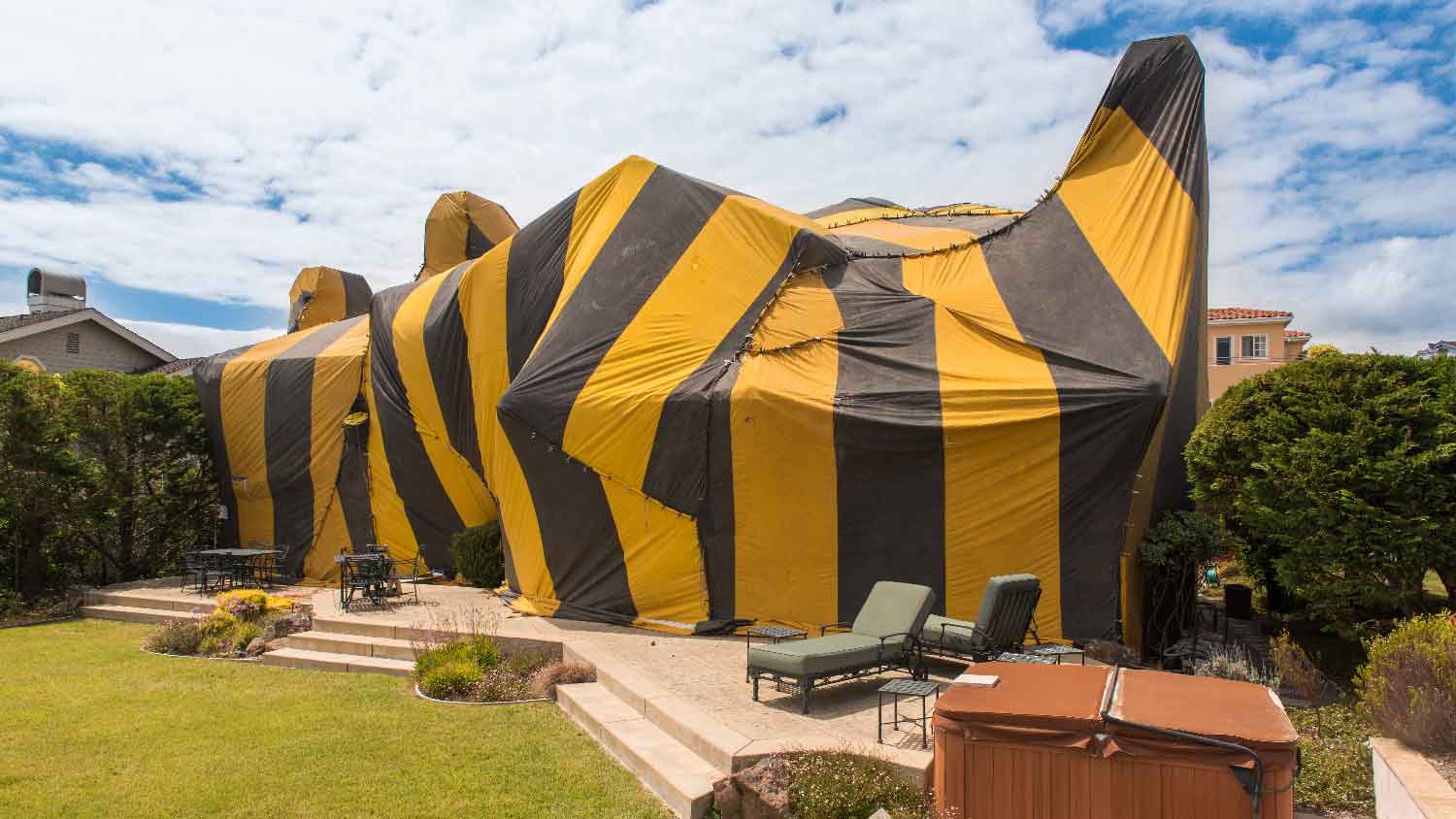
Tenting is a costly but effective way to exterminate termites. Learn the average termite tenting cost and everything that will factor into your budget.
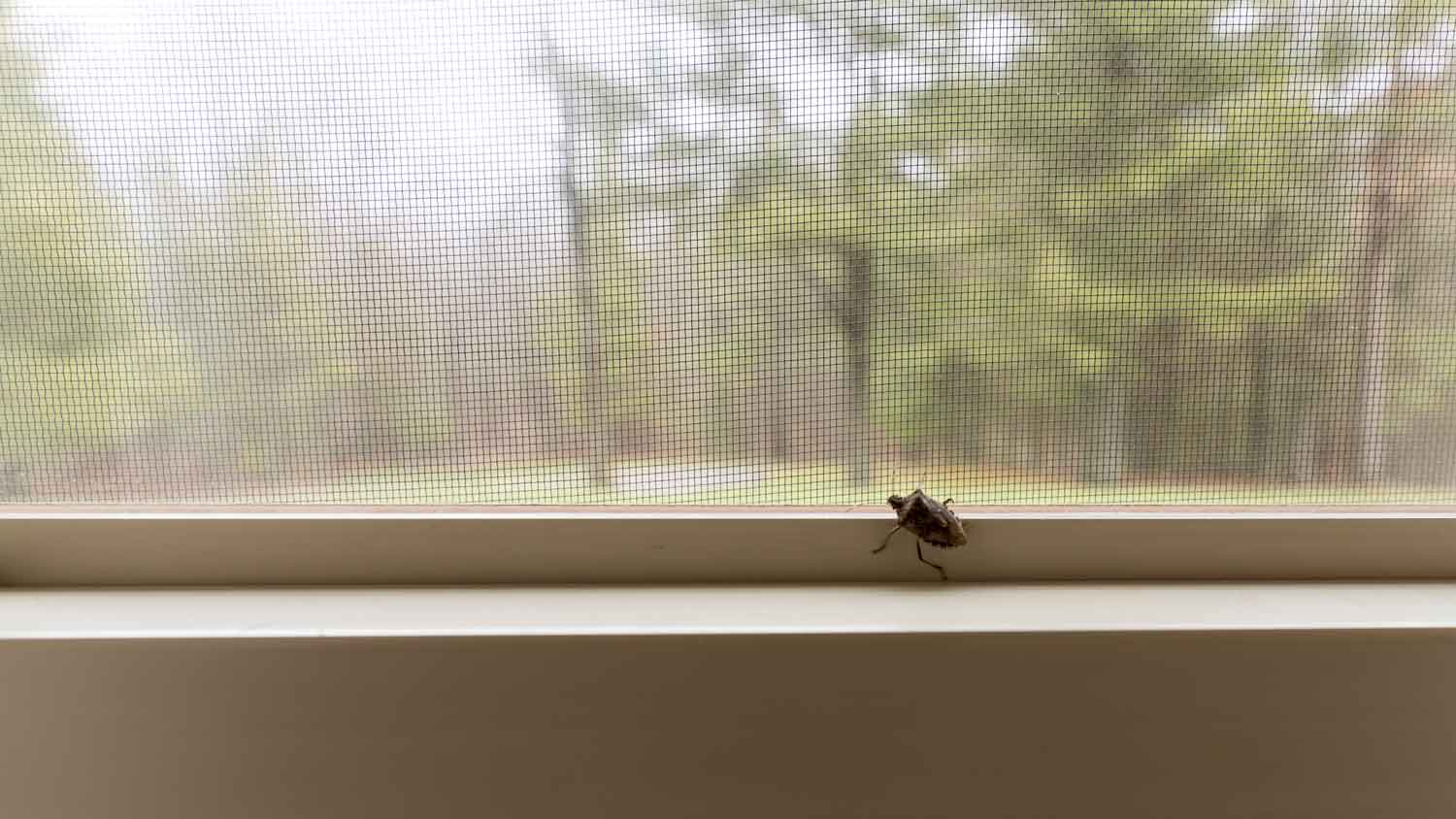
Stink bugs are annoyingly persistent, but there are ways to fight back. Learn how to exterminate stink bugs in the house and prevent them from coming back.

Take preventative measures to stop snakes and rats from swimming into your toilet bowl. But rest easy knowing that this is not a common occurrence.

Noticing a growing number of rats calling your yard or garden home? Here are your best options to deal with them.